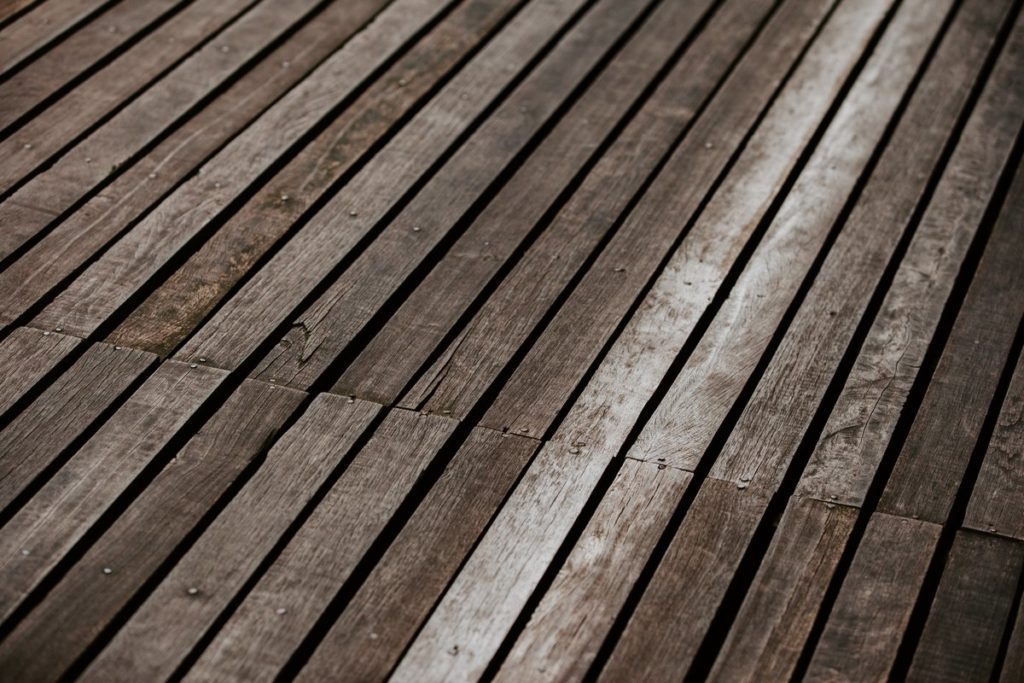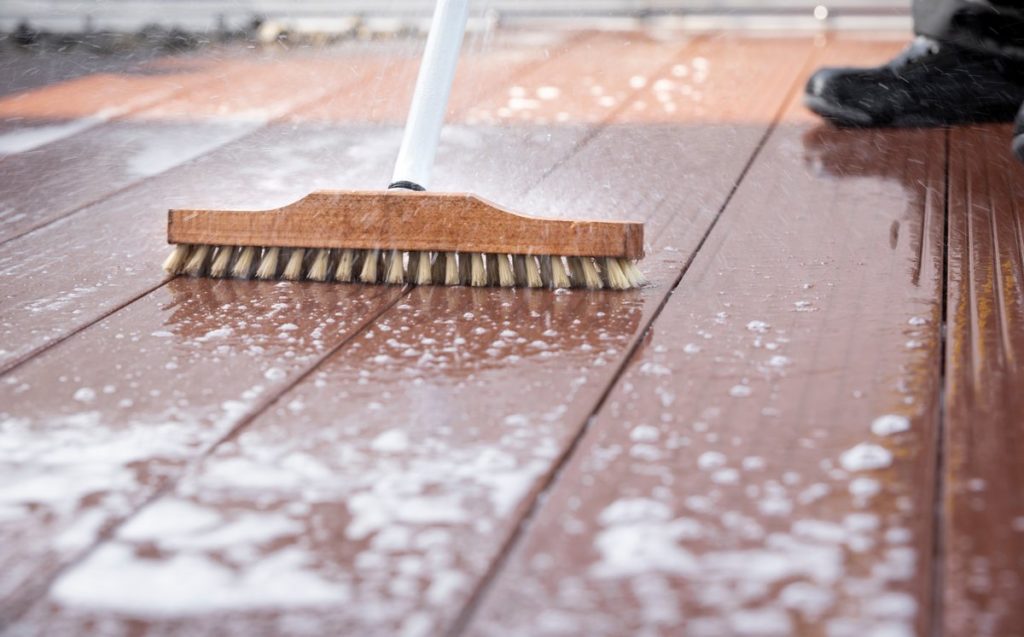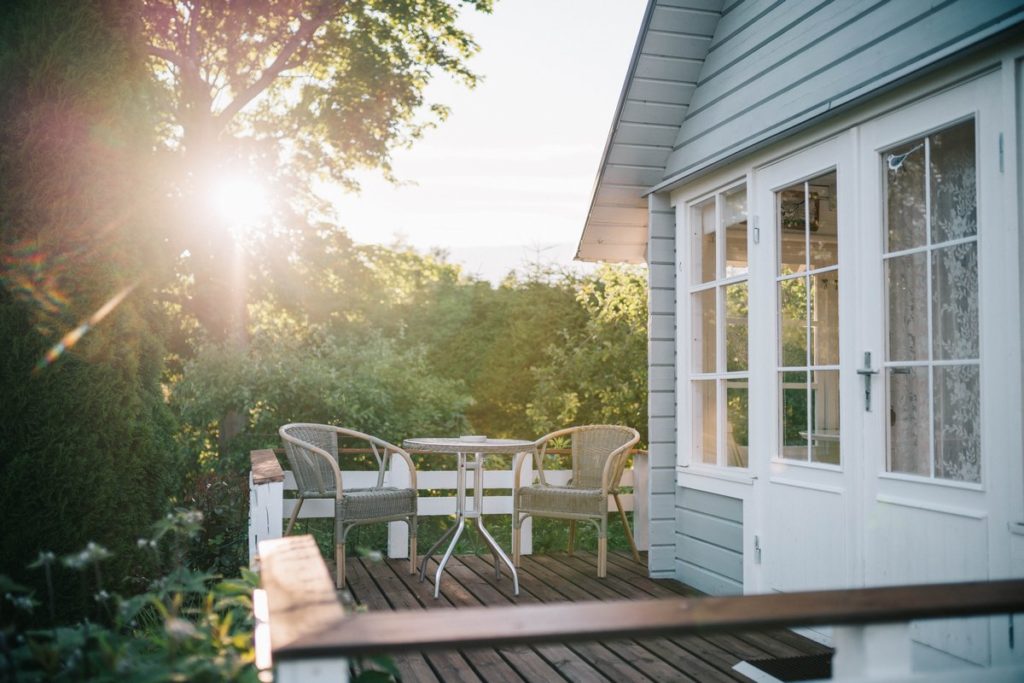
Decking maintenance and care tips: How to protect your deck
Once the cooler months arrive after a long summer, it’s easy to forget about maintaining your deck when the days become shorter. Winter temperatures and conditions can quickly cause your deck to weaken and warp, leaving it structurally damaged by the time spring comes around. The secret to keeping your deck in perfect condition all year round is simple - maintenance and care.
Contents
- Inspecting and repairing damage
- Cleaning regularly and removing mould
- Staining surfaces and treating timber
Inspecting and repairing damage
One of the simplest ways to keep your deck in great condition throughout the year is by just checking on it. When you have a look, there may be a splinter in the timber or a few nails starting to protrude. While small issues like these may seem insignificant and not worth the hassle, leaving them unresolved is likely to cause deeper structural damage. By taking the time to inspect and repair any damage, you’ll avoid larger costs down the track.
Consciously reminding yourself to keep an eye on your deck, even when storm season passes and wilder weather seemingly calms down, is the first step in making sure your deck lasts.
Our tips:
- Promptly repair any loose floorboards before they become more unstable and break
- Maintain and treat water damage, even small amounts, to prevent timber from warping, rotting and decaying
- Fill in any gaps in your timber decking, left often from missing nails, to stop rot from growing

Cleaning regularly and removing mould
Fallen flowers and leaves might look like pretty decor when spread over your deck, reminiscent of the summertime. When left unattended, they gradually become a hotbed for mould, mildew, moss and algae. Natural debris residing on your deck is prone to causing structural damage.
Queensland’s typically humid climate creates a haven for stubborn mould to grow, only to persist into the winter months without many of us realising. If left to fester in its new home – your deck – mould spreads across the timber.
Our tips:
- Sweep and dispose of any loose flowers or leaves scattered over your deck
- Moisture leeches onto pot plants and deck furniture, potentially causing wood rot and timber discolouration
- Store exposed furniture and pot plants undercover to prevent long-term damages
- Use Intergrain Mould Preventer to treat the growth of mould in advance
If you’ve found mould or mildew growing on your deck, the time has passed for a casual tidy-up – you need to combat it with direct cleaning measures.
- Mix detergent and water together in a bucket for a simple and effective cleaning solution
- Apply mixture across your deck with a garden spray and allow it to absorb for 10 to 15 minutes
- Remove mould with a scrubbing brush or stiff broom once the solution has settled
Stubborn mould may need extra applications. Make sure you closely follow manufacturer or supplier instructions when finishing your deck. We recommend not using a high pressure blast to wash your deck – depending on the timber, it may cause more damage.

Staining surfaces and treating timber
Once you’ve finished cleaning your deck up, the final step is staining the surface and treating the timber with preservatives. Using a protective stain or sealant is ideal for creating a barrier against harsh winter conditions, keeping your timber from splitting, cracking and warping.
Not only does staining your timber offer greater protection, it also allows the natural texture and grain to show. Retaining the natural aesthetic of timber, the stain protectant gives your deck an improved shine and lasting colour.
Our tips:
- Use a natural bristle brush for an even and smooth coat
- Match the stain with your particular timber species to ensure ideal colouring
- Apply stain in long strokes as one thin coat while covering any cracks
Now that you’ve repaired, cleaned and stained your deck, all that’s left is keeping it neat and tidy. By inspecting and treating your timber deck every few years, the less ongoing maintenance needed and additional costs from fixing structural decay.

When in doubt, keep in mind our do’s and don’ts:
Do cover shrubbery and plants with a tarp
Do sand your deck before using a sealant
Do keep your deck free of debris by sweeping
Don’t use chlorine or bleach to clean your deck
Don’t use paint as a sealant
Don’t high pressure wash your deck
Still got more questions about your deck? Our decking FAQs have got you sorted. For more information, contact us - your local timber experts.